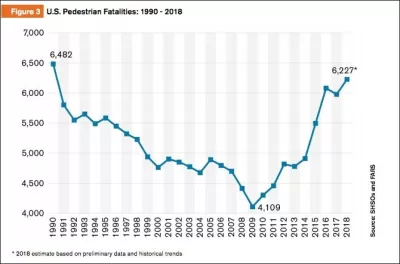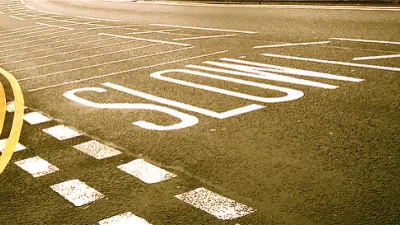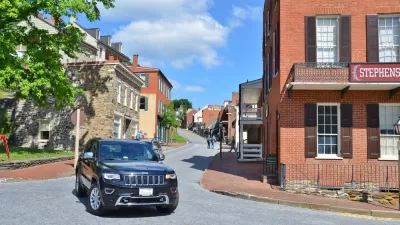Europe proves to Americans that when it comes to pedestrian fatalities, it doesn't have to be this way.

Joe Cortright takes a deep dive into the latest traffic safety data provided by the National Highway Traffic Safety Administration.
The most alarming data from the latest traffic safety report, as summarized by Cortright, "In the nine years from 2009 and 2018, pedestrian deaths increaseed 51 percent from 4,109 to 6,227."
Cortright's larger point isn't to prove exactly why so many more cars are killing so many more pedestrians on streets and roads around the country, but that Americans should not accept these tragedies as a necessary result of mobility. Americans only need look to Europe, which has greatly reduced pedestrian fatalities over the same span.
While some may regard a pedestrian death toll as somehow unavoidable, the recent experience of European countries as a group suggests that there’s nothing about modern life (Europeans have high rates of car ownership and as many smart phones as Americans) that means the pedestrian death toll must be high and rising. In fact, at the same time pedestrian deaths have been soaring the US, they’ve been dropping steadily in Europe. In the latest nine year period for which European data are available, pedestrian deaths decreased from 8,342 to 5,320, a decline of 36 percent.
Those data come from the European Road Safety Observatory [pdf].
Aaron Short at Streetsblog USA first reported on the pedestrian safety data from the NHTSA.
FULL STORY: Why are US drivers killing so many pedestrians?

Maui's Vacation Rental Debate Turns Ugly
Verbal attacks, misinformation campaigns and fistfights plague a high-stakes debate to convert thousands of vacation rentals into long-term housing.

Planetizen Federal Action Tracker
A weekly monitor of how Trump’s orders and actions are impacting planners and planning in America.

In Urban Planning, AI Prompting Could be the New Design Thinking
Creativity has long been key to great urban design. What if we see AI as our new creative partner?

King County Supportive Housing Program Offers Hope for Unhoused Residents
The county is taking a ‘Housing First’ approach that prioritizes getting people into housing, then offering wraparound supportive services.

Researchers Use AI to Get Clearer Picture of US Housing
Analysts are using artificial intelligence to supercharge their research by allowing them to comb through data faster. Though these AI tools can be error prone, they save time and housing researchers are optimistic about the future.

Making Shared Micromobility More Inclusive
Cities and shared mobility system operators can do more to include people with disabilities in planning and operations, per a new report.
Urban Design for Planners 1: Software Tools
This six-course series explores essential urban design concepts using open source software and equips planners with the tools they need to participate fully in the urban design process.
Planning for Universal Design
Learn the tools for implementing Universal Design in planning regulations.
planning NEXT
Appalachian Highlands Housing Partners
Mpact (founded as Rail~Volution)
City of Camden Redevelopment Agency
City of Astoria
City of Portland
City of Laramie





























